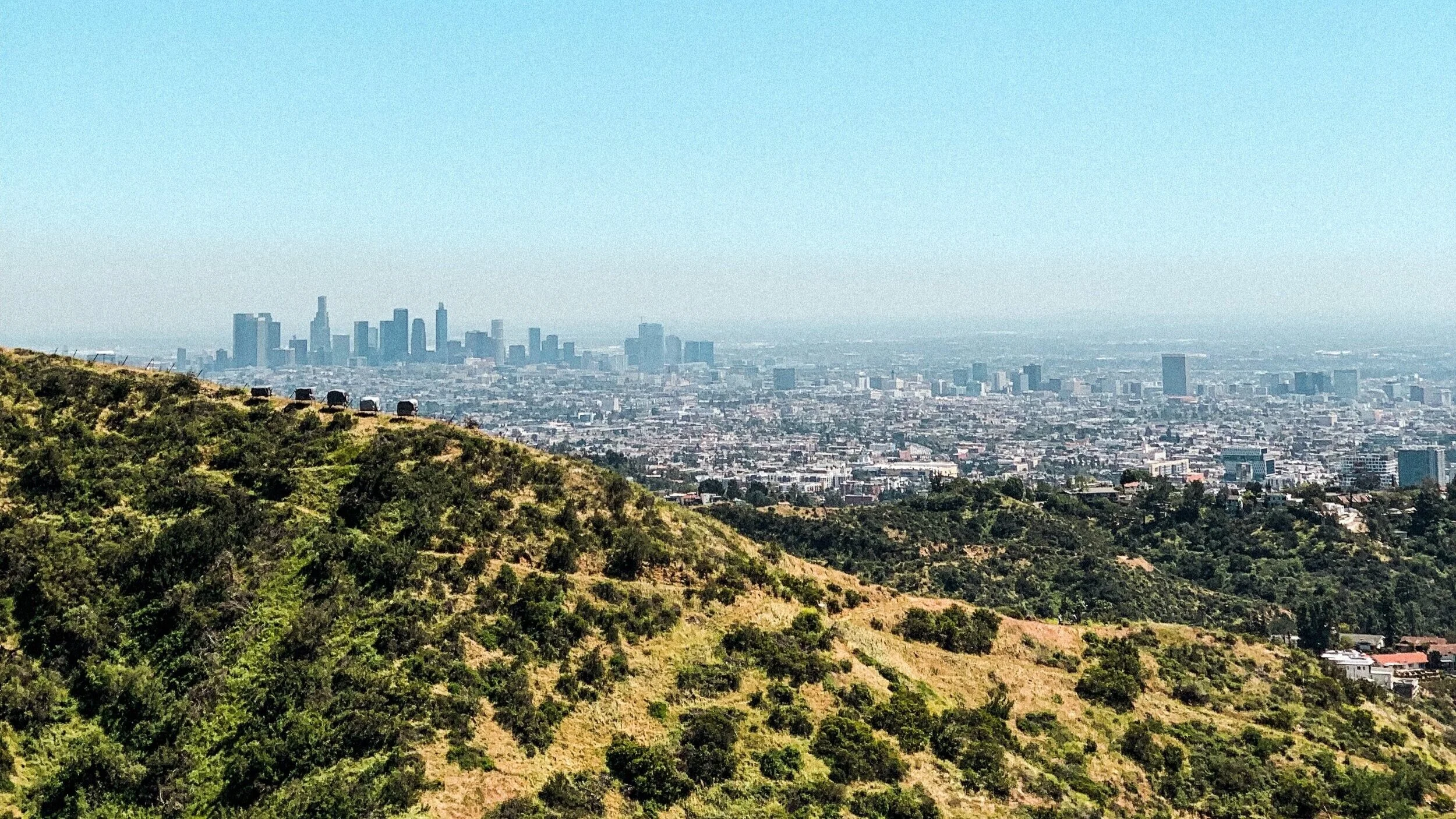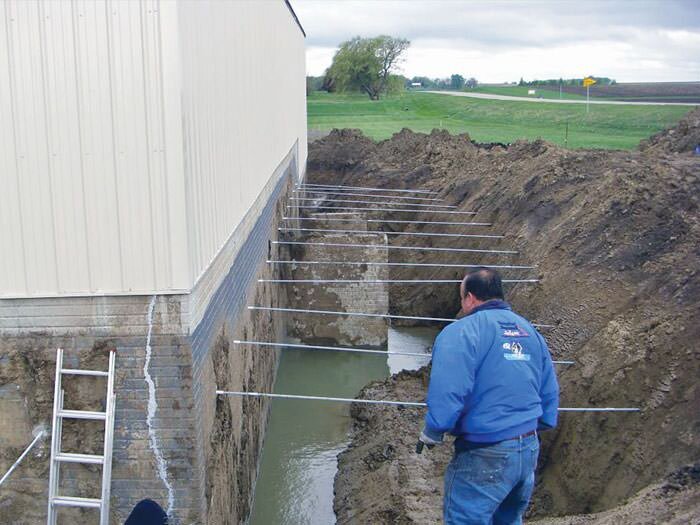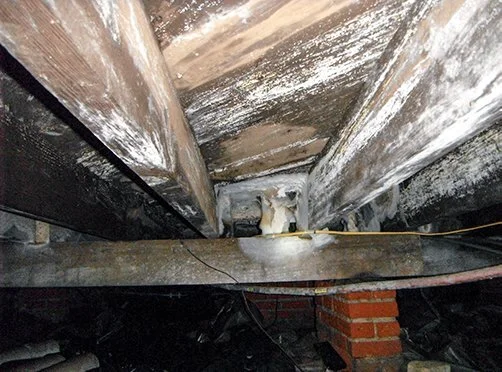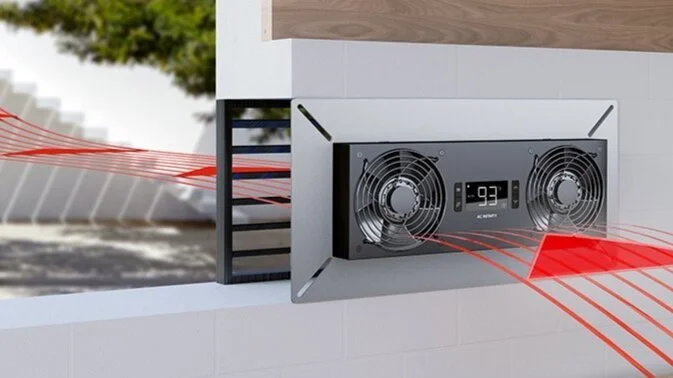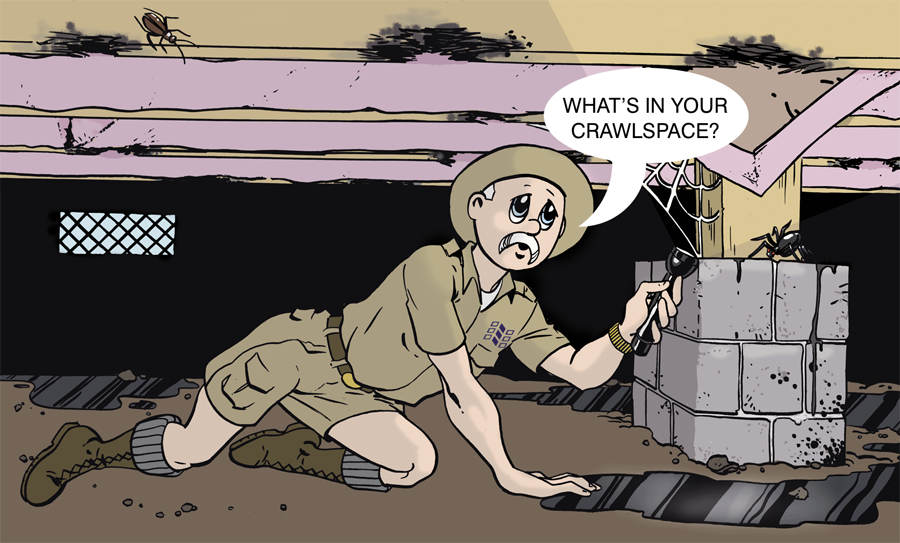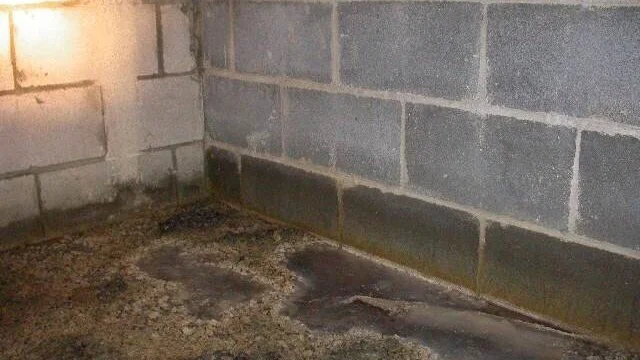CRAWLSPACE FACTORS
You’ve probably heard of the “LA Basin.”
The San Gabriel Mountains contribute rainwater to LA area. The Santa Monica Mountains, Palos Verdes, Baldwin Hills and Signal Hill all contribute to moisture being added into the “LA Basin.”
Out of Sight—Out of Mind
Everyone is aware of rain, rivers, lakes and oceans since they are highly visible, but groundwater is out of sight and therefore out of mind.
La Cienega Boulevard, which travels from The City of Hawthorn (South of the 105 Freeway) to The Sunset Strip was named after Rancho Las Cienegas, Spanish translation: "The Ranch of The Swamps.” Today a high “water table” lies just below ground and, in many cases above ground in a crawlspace where it’s not obvious.
Approximately 30% of LA County’s water usage comes from naturally created underground pockets of fresh water. These ground water areas are called aquifers. There are 22 DWP regulated aquifers south of the San Gabriel Mountains. Each of which is thoroughly monitored by its own governing agency.
Basin: a depression in the Earth's surface, which is contributed to by multiple watersheds.
Watershed: an area or ridge of land that separates waters flowing to different rivers, basins, or seas.
Foundation walls can act as a barrier of the natural flow of groundwater from the hills to the valleys below, causing puddles and small swamps next to and hidden underneath structures.
Potencial Consequences
Dry Rot:
wood decay occurring in poorly ventilated conditions in buildings, resulting in cracking and powdering of the wood.
Wood that has over 20% moisture content is susceptible to dry rot which destroys its structural value.
Still and humid conditions causes dry rot in crawlspaces.
Mold:
a growth that degrades a cellular material. Mold requires humid conditions to form and continue to spread.
Moisture content above 19% for approximately one week is required for significant surface mold growth to occur on structural building components.
Termites:
any of numerous pale-colored soft-bodied social insects that live in colonies consisting usually of winged sexual forms, wingless sterile workers, and soldiers. They feed on wood.
All termites are very thin skinned, which is the reason humidity is very important for their
comfort and survival. They would dry out quickly and die if they were exposed to the elements. Hence, termites love humidity. In fact, they seal up their colonies in order to preserve humidity within the colony.
Wet Crawlspace Solutions
French Drains:
an under ground drainage system.
Ideally french drains are installed around the outside perimeter of a structure, however retrofitting this system after a building has been landscaped and outfitted with planters, concrete walkways and patios can often be cost prohibitive.
Unfortunately homes that have french drains, have often been installed too high to be effective.
Place a french drain well below the floor of a home and the home, itself, will be protected from flooding.
However, a crawlspace that is situated below a french drain can be saturated with groundwater creating humidity, mold, and dry rot of the structural lumber that supports the home.
This then is the starting place for termites to infest a home.
When adding a french drain system lower than a crawlspace isn’t practical, an intelligent fan system is the best solution.
Crawlspace Fan Systems
When cross ventilation isn’t sufficient, mechanical ventilation is required per building codes.
Sophisticated sensors placed inside a crawl space and on the exterior of a home can govern a system of fans. All automatic, but with a digital monitor inside a home for peace of mind.
An intelligent fan system brings air from outside your home only when it will soak up the moisture below. This is done by measuring dew point and ignoring Relative Humidity and Temperature.
Dew Point: when air is chilled and releases it’s moisture as in dew in the morning.
Crawlspace fans that merely measure humidity or temperature are in fact stupid. Hot air holds more moisture than cold air. When hot air is forced into a cool crawlspace it releases moisture more often than not. Fans controlled by a humidistat or a thermostat add moisture to crawlspaces.
The Atmox Intelligent Fan Systems measure dew point with a rare tool called a dew-point-stat.
When crawlspace moisture is extreme an intelligent fan system can include wood moisture sensors, and a dehumidifier. In this case two fans systems operate independent of each other. When air outside will only moisten the crawlspace the intake and exhaust fans are turned off and another set of fans along with a dehumidifier turns on. The fans circulate crawlspace air toward a dehumidifier that mechanically soaks up moisture and places it in a pipe to carry water outside the structure. With this system a crawlspace is being dehumidified 24/7/365, but only when experiencing unhealthy moisture levels.
Crawlspace Vapor Barriers
Groundwater can be redirected by changing its path of least resistance. Covering the dirt in a crawlspace will cause groundwater to pass by a home and continue to a lower property. However, one should never cover the footings, since this obfuscates cracks and other foundation issues that develop over time.
When covering the floor of a crawlspace the footings become more saturated because, more water is forced up the footings via capillary action.
Capillary Action: the ability of a liquid to defy gravity in masonry.
The most effective crawlspace system covers moist dirt with a vapor barrier, plus an intelligent fan system to dry out the footings. What isn’t passing under the house is being dried out.
Standing Water Solutions
Homes built into hillsides or on the flat lands of valleys can have standing water or little creeks inside. When not visibly present evidence of such may exist.
Sheet barriers and fan systems cannot handle standing water in a crawlspace. This condition requires a sump.
sump: a pit in which liquid collects.
Sumps usually need sump pumps to move the water collected away from a structure.
Most sumps are manufactured in a way to collect surface water off a concrete floor. These do not work in a crawlspace due to the usual dirt floors.
Masters of Moisture has invented an ideal “soaking sump system” that allows water in while filtering out dirt and preventing penetration from roots.
Value Engineering
One or more of the above solutions is needed to solve crawl space moisture problems. Ideally these solutions are professionally designed for each property’s unique circumstances.
We Provide:
Free advice
Inspections
Reports
Estimates
Professionally Implemented Solutions
Recommendations to other skilled trade persons.

